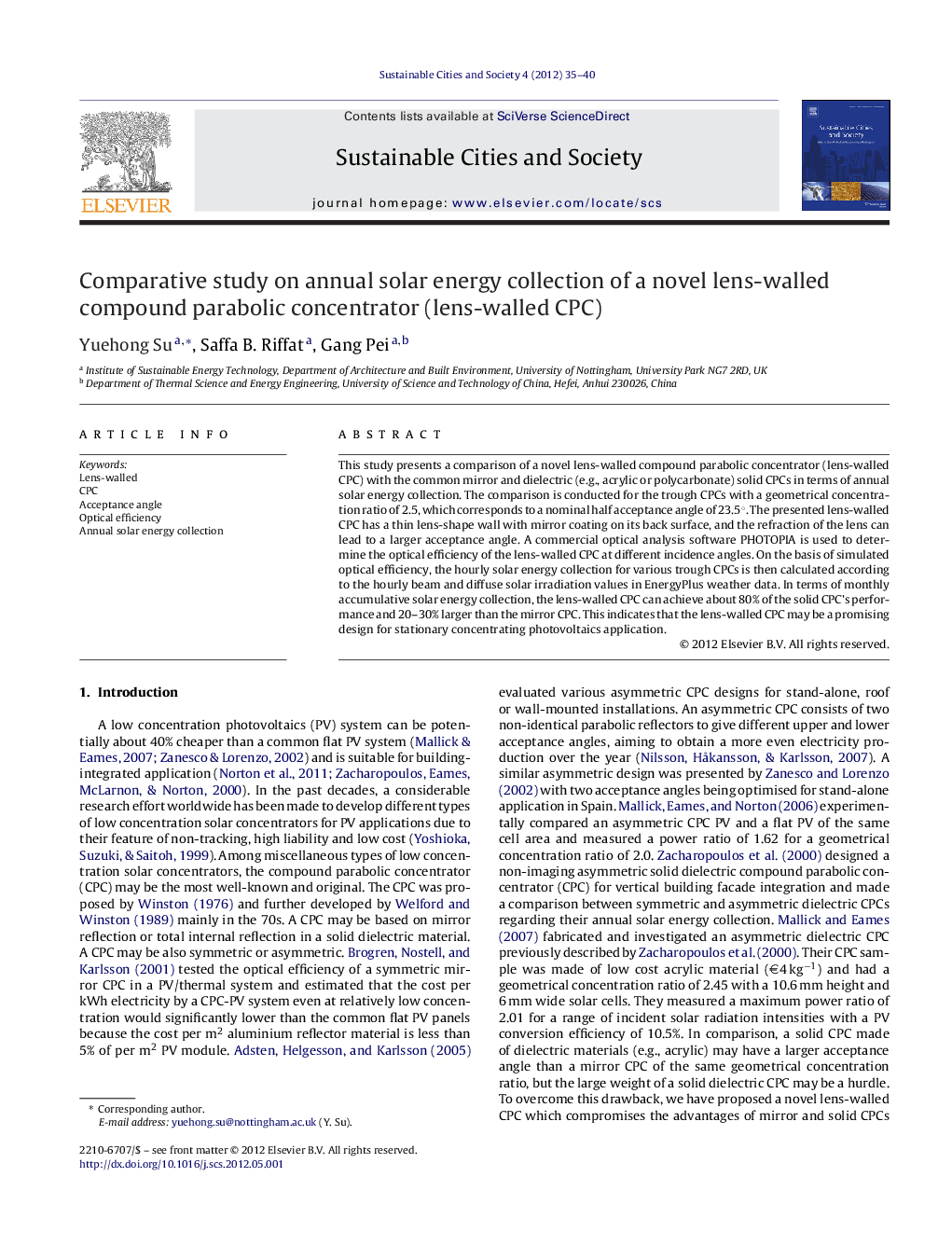| Article ID | Journal | Published Year | Pages | File Type |
|---|---|---|---|---|
| 308241 | Sustainable Cities and Society | 2012 | 6 Pages |
This study presents a comparison of a novel lens-walled compound parabolic concentrator (lens-walled CPC) with the common mirror and dielectric (e.g., acrylic or polycarbonate) solid CPCs in terms of annual solar energy collection. The comparison is conducted for the trough CPCs with a geometrical concentration ratio of 2.5, which corresponds to a nominal half acceptance angle of 23.5°. The presented lens-walled CPC has a thin lens-shape wall with mirror coating on its back surface, and the refraction of the lens can lead to a larger acceptance angle. A commercial optical analysis software PHOTOPIA is used to determine the optical efficiency of the lens-walled CPC at different incidence angles. On the basis of simulated optical efficiency, the hourly solar energy collection for various trough CPCs is then calculated according to the hourly beam and diffuse solar irradiation values in EnergyPlus weather data. In terms of monthly accumulative solar energy collection, the lens-walled CPC can achieve about 80% of the solid CPC's performance and 20–30% larger than the mirror CPC. This indicates that the lens-walled CPC may be a promising design for stationary concentrating photovoltaics application.
► A novel lens-walled compound parabolic concentrator (lens-walled CPC) is described. ► The optical efficiency of the lens-walled CPC is determined using PHOTOPIA software. ► The annual solar energy collection of the lens-walled CPC is estimated using EnergyPlus weather data. ► The lens-walled CPC has a better annual solar collection performance than the corresponding mirror CPC. ► The lens-walled CPC can be a light-weight alternative to the dielectric solid CPC.
